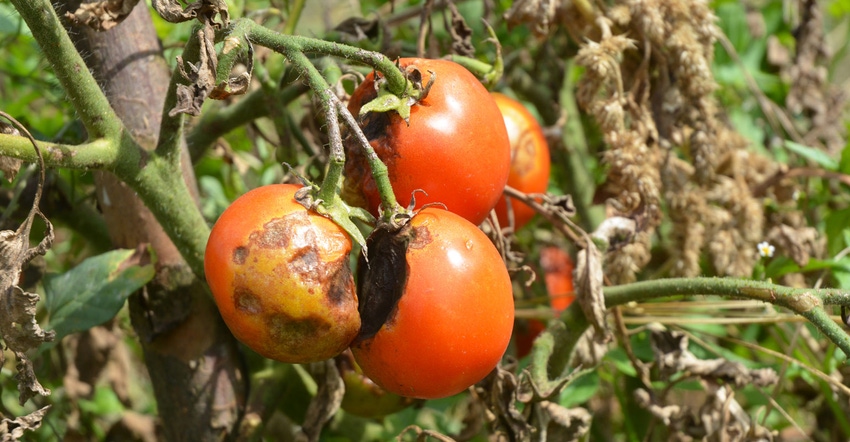
Steve Bogash loves his tomatoes. So much so that he’s grown up to 32 different varieties at a time in trials when he was an Extension agent for Penn State.
Bogash has seen a lot of diseases over the years, one of the worst being late blight. And once it’s in your fields, it’s hard to get rid of, especially if you grow organically.
“When late blight is in town, you need to react to it. It is the No. 1 problem for organic growers of tomatoes that will take you out of business,” he said at the recent conference of the Pennsylvania Association for Sustainable Agriculture.
One of the ways to deal with late blight, whether growing conventional or organic, is finding something to help prevent it. Bogash, who is now a territory sales manager for Marrone Bio Innovations, said he’s seen lots of success using biofungicides.
According to UMass Amherst, biofungicides are formulations of naturally occurring living organisms to control plant fungi and bacteria. Using them in vegetable production is based on observations of natural processes where microorganisms, usually isolated from soil, hinder the activity of plant pathogens.
“Where I really like these materials, if you're not an organic grower, you're a conventional grower, you can add these to your program to make your materials last longer," he said.
One example of a biofungicide is LifeGard, manufactured by the Certis USA LLC. It contains the naturally occurring bacterium Bacillus mycoides, which is found in soils. The biofungicide helps to trigger and enhance a plant’s natural defense mechanism to prevent disease, such as late blight.
Bogash said he treats his tomatoes with a biofungicide right at the time he sees a true leaf. He says it takes about two days from application for the plant’s defense systems “to turn on.”
Not long lasting
The challenge with using biofungicides or any other bio materials, he said, is that they don’t have a long shelf life.
“For living materials, you are relying on them to infect down in the soil, and they have a lot shorter shelf life,” he said. “RootSheild (biofungicide) when you get it in brand new has a 10-month shelf life if you keep it fridged up.”
Other products that have nonliving materials, he said, have an average shelf life of around three years.
“When you get products in, always date them,” he said.
A holistic approach
Ultimately, the success of any disease prevention program, whether conventional or organic, comes down to yield and profit.
With a disease like late blight, Bogash said growers should think of a more holistic approach, especially if using biological controls.
Unlike its sister disease early blight, which causes lesions on tomatoes that can be confused with other diseases, late blight is much easier to spot.
“Late blight is easier as you can see the spore masses and grease on the fruit. It will foam and put out more spores,” he said, adding that late blight usually affects the top of a plant because it is airborne.
The late blight pathogen doesn’t overwinter in this region, but that doesn’t mean you won’t see problems as early as June. That’s because petunias, which are in the same plant family, are hosts for the disease.
“Those cuttings will come out of Guatemala with late blight on them," he said.
With more growers starting plants in greenhouses, including petunias, the warm, moist environment creates a haven for the late blight pathogen.
“Greenhouses are great at spitting out spores on the one end right into the environment. We see hotspots all the time because of that and often it comes from a petunia crop,” he said.
One way to see if you have late blight is to take a simple at-home test. Take a leaf or fruit, put it in a small baggie with a single paper towel and place in the bottom of a refrigerator for 48 hours. If you see the leaf or fruit start to foam, you likely have late blight in your plantings.
Knowing the water pH is important when it comes to creating a spray mix. “You want it between 6 and 8. If you’re low, you can add potassium bicarbonate,” Bogash said.
Using resistant varieties, he said, is also important. “The modern hybrids have more resistance compared to old heirlooms, but if you put the heirlooms on grafted rootstock, you can get good resistance,” he said.
About the Author(s)
You May Also Like






